LG V60 ThinQ 5G review: the regressive flagship


The LG V60 ThinQ 5G lacks the aesthetics to place it in this generation's flagship category. However, if one were to just look at the spec sheet itself without taking into consideration its hardware specifications such as a Snapdragon 865 chipset, a 5,000 mAh battery, and Dual-Screen capability, then it would definitely pique anyone's curiosity.
If I were to sum up my experience of using the LG V60 ThinQ 5G for over a week, it would be this: one step forward, two steps back.
Good
- Powerful Snapdragon 865 chipset
- 8k video recording
- 3.5mm headphone jack and a Hi-Fi DAC chip
- Multi-tasking is enjoyable on the second screen
- Gorgeous OLED display
Bad
- Poor camera performance for a flagship
- No telephoto lens
- Obscenely large body and dated design
- The second screen can be cumbersome and too complicated
LG V60 ThinQ release date and price
The LG V60 ThinQ 5G was officially announced on February 26, 2020, after having it revealed at IFA 2019. It was then released on March 20 this year in South Korea. Retailing for $799 in the US, the LG V60 ThinQ 5G was made available on select mobile operators only.
A massive premium design straight out of 2018
"Go big or go home." The LG V60 ThinQ 5G makes no qualms about muscling its way into the flagship market, and wants you to feel good wielding the device. Available in two colours: navy blue and white, this is one huge handset with gargantuan proportions of 169.3 x 77.6 x 8.9 mm while tipping the scales at a hefty 218 grams. Holding the LG V60 in your hands is not the most pleasant of smartphone experiences despite its rounded corners, as the location of the fingerprint reader is less than ideal, being placed too low for my liking.

The size is even more noticeable when you slip on the Dual Screen case (yes, it is a case that not only offers some semblance of protection but supposedly additional convenience). The entire handset then ends up as a cumbersome device that would have trouble fitting in most pockets properly. I was also extremely apprehensive when doing so, having felt as though the slightest bit of extra pressure might cause the USB-C connector to break when unplugging the smartphone from the case.
LG has taken another look at its design, having opted for a smooth glass back, aluminum edges and a display with wide edges and a teardrop-shaped notch right at the middle top area of the handset. In other words, I felt as though this was a smartphone that walked right out of 2018 (or an iPhone 11 with a poorly designed notch).
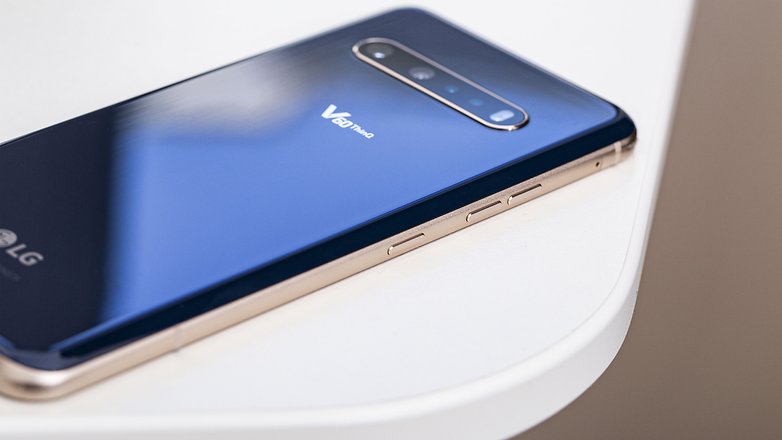
The body might have a clean design and yet it looks dated. In fact, the LG V60 does seem to lack originality with its so-called reworked design as hailed by other parties, although it did not thrill me at all. The only positive note that I can draw from this would be the placement of the camera module: it is relatively thin and arranged within an island in a horizontal manner as seen on the Samsung Galaxy S10. I appreciate such a layout since the smartphone will not wobble when I place it flat on its back.
As for the overall design language of the handset, the LG V60 ThinQ 5G is uninspiring on the outside. Let's see if there is an inner beauty that will help make up for this aesthetic faux pas.
A Dual Screen without 90 Hz
The LG V60 ThinQ 5G has a 6.8-inch OLED main display with the now familiar 20.5:9 aspect ratio. There are no curved edges to indicate that it is keeping up with the current trend, but that does not bother me at all. However, having been used to a 90 Hz display other devices recently, the 60 Hz display is a letdown. I really missed enjoying the smooth display of my OnePlus 7T and I even felt (although not every single time) that scrolling through the applications on the home screen was slow at times.
The teardrop notch at the top of the display is reasonably sized, but it does not bode well for a 2020 flagship to sport such a design. At 1080 x 2460 resolution with a density of 395 dpi, it doesn't hold a candle to Samsung's QHD display.
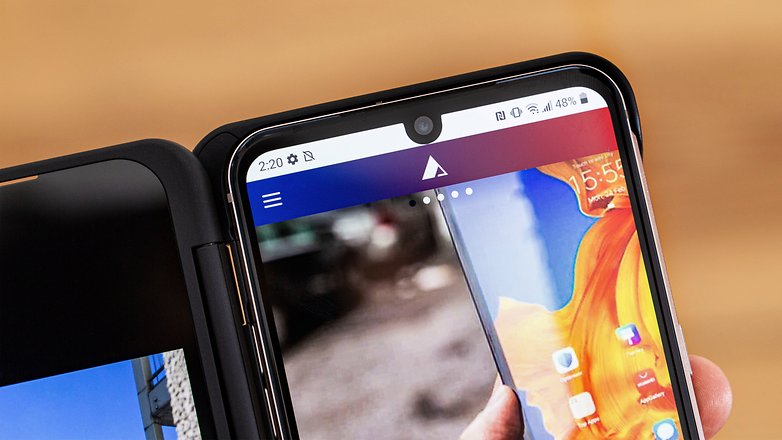
Even without a probe for precise measurements, the colorimetry of the LG V60's display is correct. It is not oversaturated, however vivid colors tend to have a tendency to be cooler. It carries decent readability even under direct sunlight, with LG touting a brightness level of up to 500 nits.
The secondary display also carries a similar configuration which is essential in delivering a degree of visual continuity on the rare occasions when you have to switch from one screen to the other. However, that seems to be the only saving grace that I can say about the screen. It works in a similar manner as a clamshell handset, except that the secondary display is connected and powered via the USB-C port on your smartphone.
Having the secondary display plugged in means there is no way to recharge the device when it is running low of juice. It is a good thing, then, that LG has thought of that potential drawback by offering a rather strange-looking adapter (that works on a magnetic principle) that sits in the USB-C port slot. It is a good thing that this design novelty does not negatively impact the charging speed.
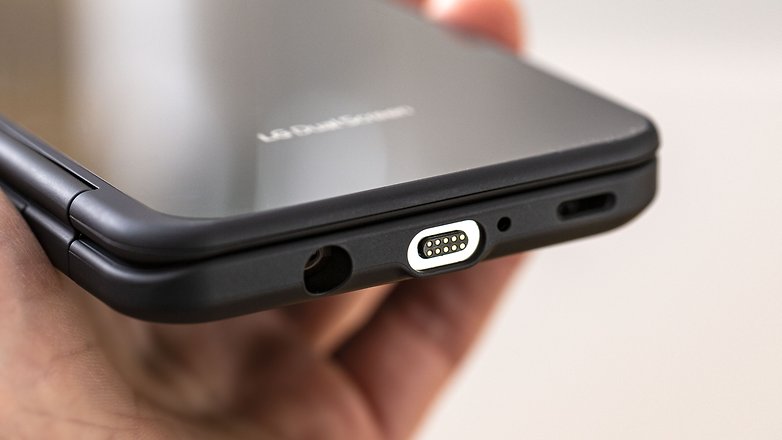
I must say that it is a pleasant experience to enjoy a YouTube video on the main screen while I skim my Twitter feed on the secondary screen. The two screens work independently, allowing you to run different applications on each simultaneously. I was even able to watch the last season of "Better Call Saul" in the background during my Battle Royale sessions on Call of Duty: Mobile.
When doing so, the processor was handling a heavier than expected load which resulted in some slowdowns during gaming, requiring me to reduce the graphical settings in order to enjoy a better framerate. The battery life also took a hit, but that was to be expected. I do admit that the setup is novel and worked rather well as intended.

But I quickly stopped using the second screen or "Dual Screen". It works well with some games (LG pre-installs all compatible applications), but not with those that I regularly play as only a selected number of games are compatible with it. Gamers would want to look elsewhere then. Asphalt 9 (which is compatible) will use the Dual Screen as a virtual controller, where the controls were not sensitive enough, rendering the entire exercise to be counter-intuitive.
You can use some applications in the "Wide View" mode, i.e. they are displayed across both screens. However, the supported list of applications is simply too few, while the entire experience feels surreal as the "full" display is literally cut in half by the frame right down the middle.
Overall, the Android 10-based LG UX software interface is intuitive enough to handle dual displays, switching from one screen to the other or to pass an app from one screen to the other. Visually, I'm not a fan of LG's OS, but the overall experience is fluid and it functions as intended.
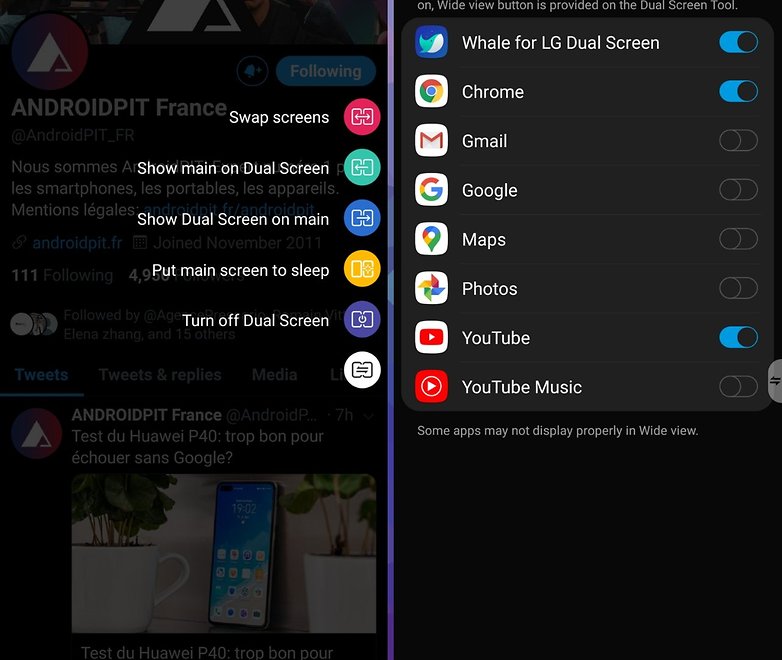
The second display is logically much thinner than the smartphone itself, and this results in an imbalance once the Dual Screen is in use. On the other hand, you can place selected applications there independently according to your preferred layout, with the option of setting it up differently (brightness, colors, etc.) from the main screen.
The outer facade of this second screen is made of opaque glass and it also doubles up as a notification screen with an Always-on display option. Frankly, this is less practical visually as opposed to the main screen. To cut to the chase, the Dual Screen is more of a gimmick than a killer feature.
The power of the Snapdragon 865 is there for you.
If the LG V60 has one indisputable strong point, it would be its processing power. Equipped with Qualcomm's latest chip: the Snapdragon 865, it arrives coupled with 8GB of RAM and the Adreno 650 GPU, allowing it to go toe-to-toe with even the Samsung Galaxy S20 Ultra in some of our benchmarks.
Overall navigation remains smooth while this is a capable gaming machine. When playing Call of Duty: Mobile and Shadowgun Wargames, two very resource-hungry games, I was able to have the LG V60 ThinQ 5G run at a constant 30 fps with maximum graphical settings without any stuttering or dropped frame rates. problem.
Like the OnePlus 7/7T and its Fnatic mode, the LG V60 has a mode specially meant for optimizing your gaming experience, enabling you to adjust the resolution and in-game framerate accordingly. I did not notice any overheating even after playing for several hours apart from the time when I plugged in the Dual Screen.
In terms of raw power, this is definitely on par with other high-end gaming smartphones in the market, proving that LG can deliver when it puts its heart and mind to it.
- Read also: Most realistic FPS games in 2020
Benchmark results for the LG V60 ThinQ 5G
| Benchmark | Score |
|---|---|
| Geekbench 5 Single/Multi Core |
913/3377 |
| Passmark Memory |
27 855 |
| Passmark Disc |
27 987 |
| 3D Mark Vulkan |
582 399 |
| 3D Mark Sling Shot |
8790 |
| 3D Mark Sling Shot Extreme ES 3.1 |
7297 |
| 3D Mark Sling Shot Extreme-Vulcan |
6595 |
Good but boring pictures
The photo module of the LG V60 is a strange beast indeed and is the Achilles Heel of the device. Considering how LG has placed the V60 ThinQ 5G as a flagship device, they would certainly know that flagship smartphones tend to deliver in the camera department. Where quadruple-camera sensors, a telephoto or zoom lens and even 108-megapixel sensors are the norm, LG decided to opt for a dual-sensor sans any telephoto lens.
Doing so can be deemed as suicidal. Without much ado, here are the rear camera specifications:
- Main wide-angle sensor 64MP, f/1.8, 27mm
- 13MP, f/1.9, 12mm ultra-wide-angle sensor
- Tof sensor 0.3 Mpx, f/1.4
The main sensor
By day, the 64 MP wide-angle sensor performs quite well courtesy of pixel binning that allows you to take 16 MP pictures with a good level of detail. The image is clear, it does not miss out on sharpness and the colorimetry is rather well managed.
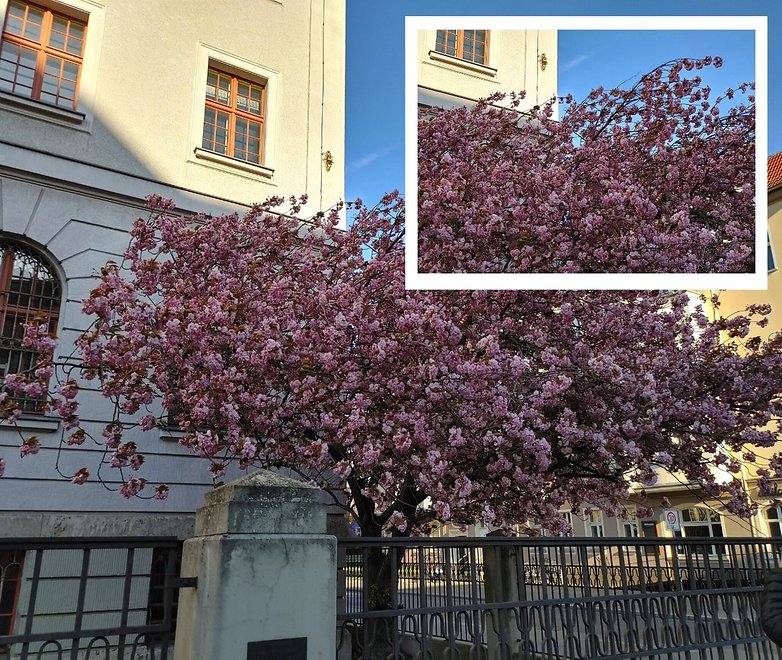
I had a little more trouble with the dynamic range (the ratio between the lightest and darkest area of the scene) which is not wide enough, and that resulted in too much room for shadows. Apart from that, the exposure is satisfactory and the white balance is perfect without being too yellow or blue.

Overall, the result is satisfactory. This would be all right or even commendable: if it were a mid-range or entry-level device, but considering this is a high-end smartphone, to have its main camera perform as such only under good lighting conditions is a disappointment.
Is there any redemption for it at night? The LG V60 proved to be surprisingly good with night mode on, where it managed to capture some pretty sharp shots. What's nice is that in very low-light conditions (pictures taken at 2am), the V60 won't force the exposure time to light up the scene as much as possible in night mode. This makes the scene darker than on other smartphones, but LG does manage to limit the digital noise well.
However, without night mode turned on, the smoothing of the image become too much at times, resulting in plenty of lost detail. This results in far too many pixels than expected, and you end up with a grainy image. This translates to a barely usable image, but in reality, I expected worse.
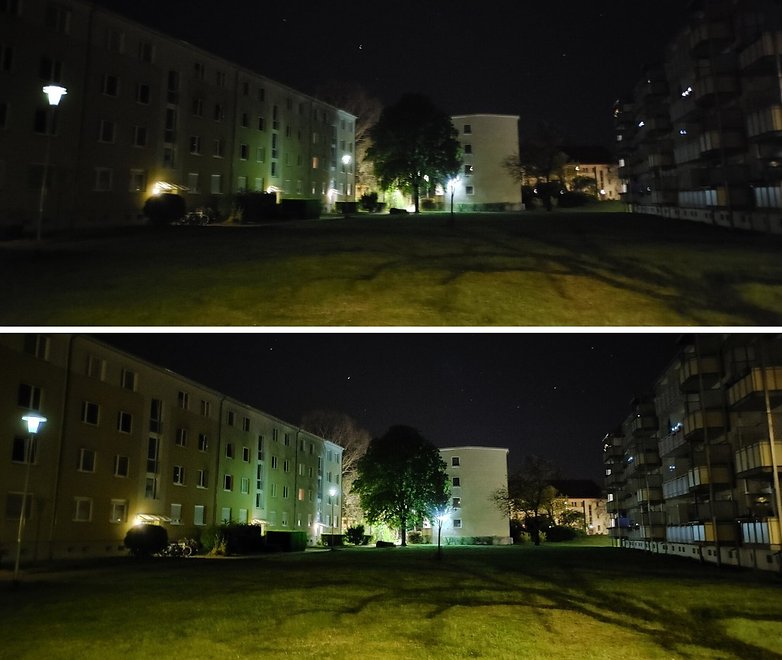
When it comes to zoom, the LG V60 misses out on a dedicated telephoto lens, which means you simply have to make do with a basic 2x optical zoom lens and digital zoom beyond that. Needless to say, plenty of detail is lost the moment you go beyond the 2x magnification mark.

Anything less than 2x zoom offers satisfactory results. Colorimetry and exposure both remain consistent for photos captured at wide-angle or 1x magnification. On the other hand, this is the strict minimum as recommended by LG, whereas its other competitors do not hesitate to espouse the wonders of their telephoto lenses which are far more capable. It is really difficult to understand why LG decided to ditch such an important lens into its camera setup considering how they are positioning the LG V60 in the market.

The ultra-wide-angle sensor
For a little versatility to LG's photographic offering despite missing out on the telephoto lens, the ultra-wide-angle sensor is a consistent performer like that of the main sensor. While the exposure is questionable, the colorimetry remains true to the natural and original colors of the scene.
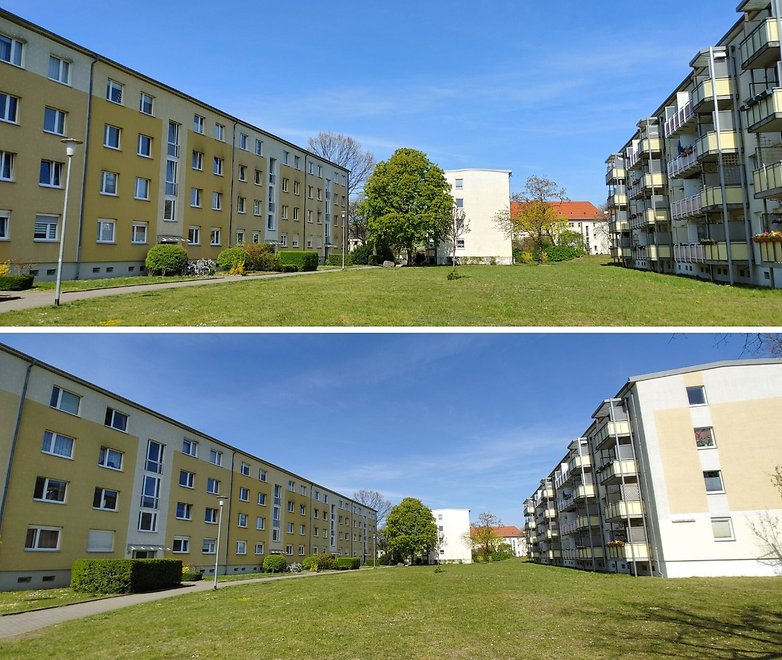
We keep a good level of detail despite the usual distortion at the edge of the image that is always found on such sensors. At night in ultra-wide-angle, the results take a dip. This is expected in many smartphones, including the high-end models. The lens is unable to capture enough light, resulting in the software to perform too much processing, drowning the pictures into digital mush that make them unfit for print. Needless to say, night mode makes the whole thing worse.
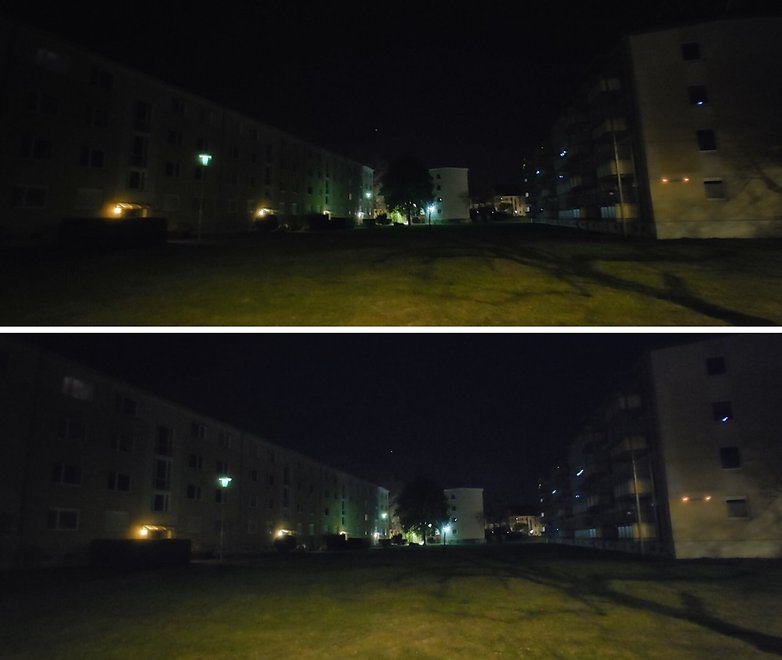
Last but not least, the ToF (time of flight) sensor completes the selection. It is basically used to "map" a scene in 3D courtesy of light rays sent and captured by the sensor (this is a rough but simple explanation).
The ToF sensor's role was supposed to enable the LG V60 to better manage depth data, resulting in a very nice bokeh effect. Personally, this feature has always piqued my curiosity as I could not test it on another human subject due to the lockdown.
However, I am impressed with its results. Images shot with this are quite clean, with foreground cropping of the subject being rather sharp even if the bokeh effect is not applied consistently across the entire background.

All in all, the V60's sensor combination did not excite me. I wasn't expecting much, but it's a shame to have decent performance while missing out on flagship-level performance. Even Apple, a company that lagged behind (having caught up since) in the photo department boasts of a triple sensor on its iPhone 11 including a telephoto lens (on the iPhone 11 Pro and above).
But I must admit that videos shot in 4K at 60 fps were impressive. While the smartphone also allows you to shoot in 8K, there are various technical limitations involved such as smoothness and stability of the image.
A battery life monster
The LG V60 is a monstrously large smartphone. After all, it does require a whole lot of juice in order to keep two displays running simultaneously, which is where the massive built-in 5,000 mAh battery comes in.
According to the PC Mark benchmark, the LG V60 took more than 18 hours to drop below the 20% battery life mark. The LG V60 supports 25-watt fast charging and wireless charging.
The manufacturer included an American plug charger for which I did not have an adapter. With the Warp Charge 30T charger that I had to use in lieu, it still took me almost an hour and a half to fully charge the battery.
In actual use, the LG V60 easily lasted across two good days without any issues. In the event where I indulged in long gaming sessions or prolonged use of the Dual Screen, the overall battery life span decreased to a day and a half. In any case, this is an excellent result which is a success for LG.
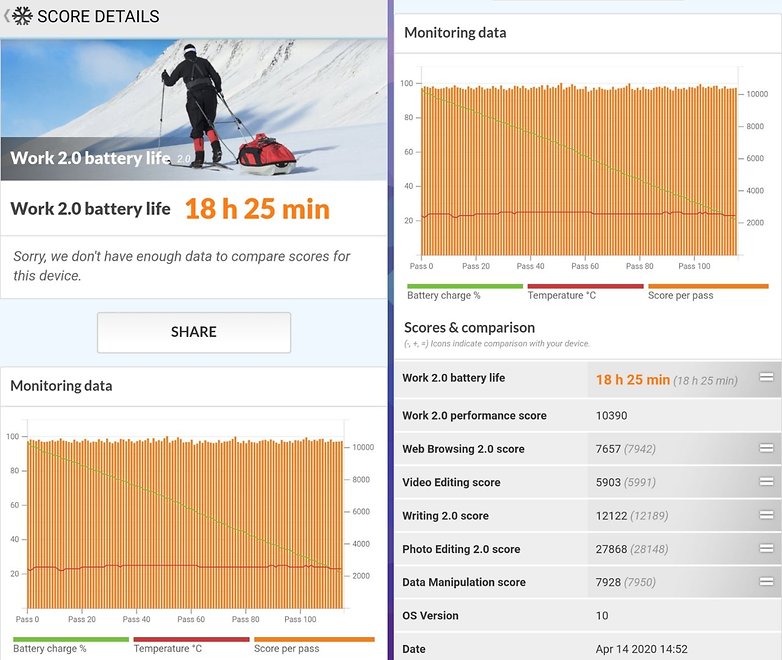
LG V60 ThinQ technical specifications
Final verdict
The LG V60 is a good high-end smartphone but it is terribly frustrating. Nothing made my jaw drop and there were no super impressive features. While it carries a specification sheet that is worthy of premium models, it does have some unforgivable flaws considering the sticker price.
While offering some nice unexpected perks, the LG V60 does not deliver as expected. I didn't expect the Snapdragon 865 chipset to perform this well on the LG V60. Then again, I was disappointed with a Full HD screen that lacked a 90 Hz refresh, taking away from really experiencing the graphical performance of the device to its fullest.
I was surprised by the excellent battery life of the smartphone but the photographic capability of this handset is simply unworthy for a high-end device. It is unforgivable to eschew the versatility of a telephoto lens by replacing it with a ToF sensor.
The Dual Screen feature is fun to use for a while, but after that, it simply becomes a gimmick once the initial "wow factor" is over. There really isn't any practical side to the Dual Screen feature in the long run, taking into consideration the limited compatibility of select games and apps. In short, with every step forward taken by LG, the V60 immediately takes two steps back. With a price of $799, it is simply not worth picking this over other smartphones in a similar price range.



















My LG V30 tooks better pictures (manual/auto mode) than my new V60: noisy, overexposed, wrong cololors etc. I'm really disappointed whith the camera. I understand why its price has come down so quickly !
The camera is the main features in mobile if any mobile has the best camera performance it means device win 50% race. Display concept is good but awful styling it. Min feature is design, CPU, display frequency but still, LG needs more improvement
I just purchased two from T Mobile on a buy one get two deal and both second screens cracked. Mine cracked with in days and the other cracked with in 20 days. Now multiple cracks are apparent. LG says I got them without cracks so not their problem. Be warned that these things are extremely delicate. We did not drop them and no signs of physical damage. I think the case screen flexes too much or the glass is too tight for the case because the cracks all start from the edge out. Don't bother with the duel screen if you get one of these.
Bro consider all parts available in the market before buying mobile from the new brand
Another bitch ass paid for by Samsung and OnePlus review
thank you LG for making the LG V60 thinQ phone with Snapdragon 865 processor chip to help me experience games on gamestoremobi very smoothly and without jerky or lag and high definition camera to help me take great photos.
-
Admin
Apr 22, 2020 Link to commentI completely fail to see the point of this device. There are some nice innovations, it is trying a different way to solve the problem, it is still extremely expensive but not as much as other in its class but what is the point?
This is by far the best most innovative phone to come out. As far as telephoto most of that is just frame cropping and a B.S. gimmick. You guy have your nose stuck so far up Hawaii ass you can not see the light of day. you can remove my admin status I no long want that association with this bias site.
Do you like 10plus hrs SOT, this is the ?. For audiophile fans, best in class, the 32bit DAC! Game pad duel screen for gamers. A very good effort on LG'S part!
On Pocketability
This is a problem for other new phones too. The Moto G Stylus and Power are thicker than the trend in phones has been. And tall. When put in a case, they push the limits of my pockets. I actually think it's too big and those are smaller in every way than this.
Phones need to start dropping in size some. It must be even more of a hassle for women or people whose style runs to streamlined and more tailored fits.
We don't need to return to luggable phones.